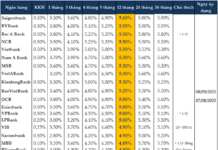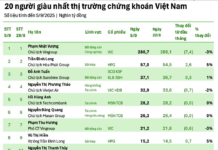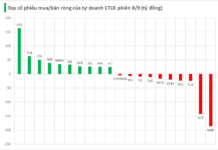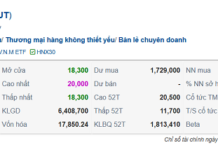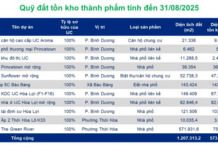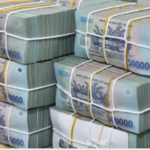
Rubber prices are increasing due to limited production in key producing countries during the winter, high oil prices and concerns about unfavorable weather in major producing countries.
On the Osaka Exchange (OSE) in Japan, the August 2024 rubber futures price – currently the reference price – ended the session on Friday (March 15) up 19 yen from Thursday’s session (up 5.71%) to 352 yen (USD 2.26) per kilogram, the highest closing price since September 22, 2011. At one point in the session, the price reached 352.2 yen, the highest level in a day since February 1, 2017.
For the week as a whole, this contract rose by 12.46%, the strongest weekly gain since October 2020.
The May 2024 rubber futures contract on the Shanghai Futures Exchange (SHFE) rose 435 yuan to 14,790 yuan (USD 109.80) per tonne.
The April 2024 rubber contract on the SICOM platform of Singapore Exchange rose 1.82% to 168 US cents per kilogram.
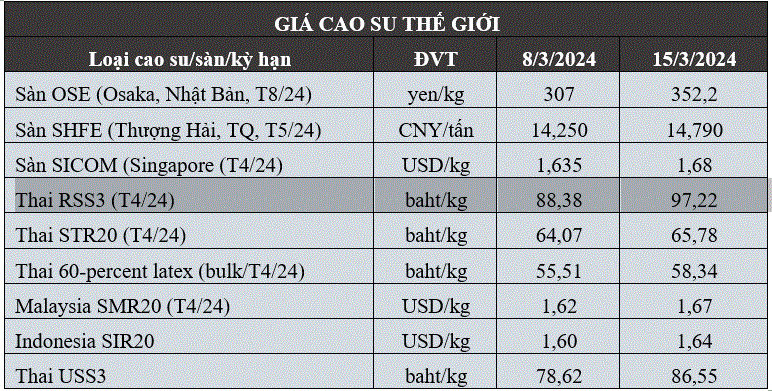
There are a series of factors driving rubber prices up.
First and foremost, skyrocketing raw material costs and limited supply from major producers such as Thailand, Africa and Vietnam in the winter season must be mentioned. The Thai meteorological agency has warned of hot weather and thunderstorms in many areas from March 14 to March 20.
Standard Thai smoke-sheet rubber (RSS3) has risen to its highest level since February 2017. As a result, RSS3 rubber sheet is quoted at 97.22 Thai baht (USD 2.72) per kilogram (FOB). Farah Miller, CEO of Helixtap Technologies, an independent data company focused on rubber, said: “The price of raw rubber RSS3 continues to rise this week, which is normal during the winter”. He added that futures rubber contracts are being pushed up at the same pace as the price of physical rubber.
Meanwhile, global crude oil prices have soared this week, rising about 4% to the highest level since November 2023 due to the fact that the International Energy Agency (IEA) predicts that the market will tighten even further in 2024 and raises its forecast for oil demand growth this year. Natural rubber is often affected by oil prices due to its competition for market share with synthetic rubber – which is produced from crude oil.
The IEA raised its forecast for oil demand growth in 2024 for the fourth time since November as Houthi attacks disrupted shipping operations in the Red Sea, but warned that “global economic slowdown will be one of the obstacles to oil consumption”.
The global energy watchdog forecasts that oil demand will increase by 1.3 million barrels per day in 2024, up 110,000 barrels per day from last month’s forecast, but still lower than the 2.3 million barrels per day growth rate in the previous year. The IEA also cut its supply forecast for 2024 and now expects oil supply to increase by 800,000 barrels per day to 102.9 million barrels per day this year.
Meanwhile, information from Tesla suggests that the company is expanding production into Southeast Asia, emphasizing that the region’s market is developing rapidly, thereby boosting demand for rubber tire production. In a post on the X social media platform (formerly known as Twitter), Rohan Patel, a senior executive responsible for public policy and senior business development at Tesla, said on March 12 that expanding into Southeast Asia is a priority for the electric car company.
Patel highlighted the rapid development of Southeast Asia, where US electric vehicle manufacturers face competition from rivals such as BYD (China). Southeast Asia has emerged as one of the hottest electric vehicle markets in recent years and could provide Tesla with a large customer base at a time when demand in the US is slowing down.
In the current context, the Vietnamese rubber industry aims to increase export turnover in 2024. The fact is that exports have been booming since the beginning of the year, with export volume in January 2024 reaching 210,327 tons of rubber, equivalent to over USD 296.71 million, up 55.9% in volume and 62.5% in value compared to the same period last year, according to preliminary data from the General Department of Customs.
China tops the list of rubber consumption in Vietnam in January 2024, accounting for 79.8% of the total volume and 78.5% of the total rubber export turnover of the country, reaching 167,814 tons, equivalent to over USD 232.97 million, with an average price of USD 1,388 per ton; compared to January 2023, it increased significantly: 56.5% in volume, 64.2% in value and 4.9% in price. India is the second largest market, accounting for 5.6% of the total volume and 5.9% of the total turnover, reaching 11,836 tons, equivalent to USD 17.61 million.
It is worth noting that exports to some small but rapidly growing markets increased by over 100%. Among them, exports to Sri Lanka in January 2024 increased by 3,507% in volume and 3,342% in value, reaching 2,344 tons and USD 3.49 million respectively; exports to the UK increased by 1,214% in volume and 1,804% in value, reaching 565 tons and USD 754,200.
It is hoped that rubber exports will continue to thrive in the near future, bringing the total export turnover in 2024 to a high growth rate.
Source: Reuters








